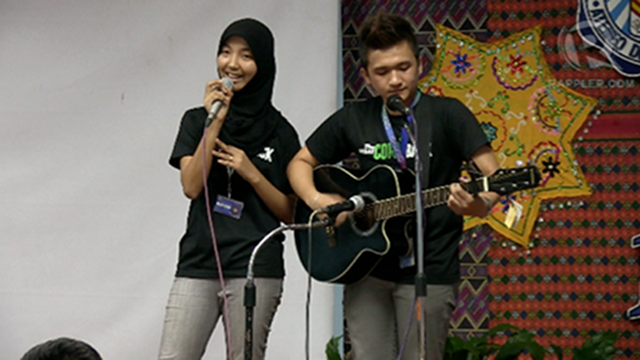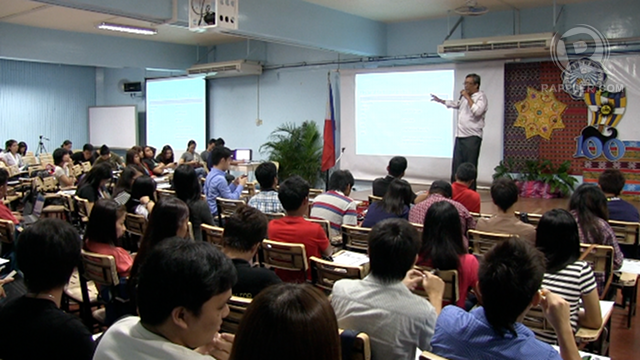SUMMARY
This is AI generated summarization, which may have errors. For context, always refer to the full article.

ZAMBOANGA CITY, Philippines – Their city is a melting pot, and the youth, who can tap social media to influence the political landscape, is its most crucial ingredient in the 2013 elections.
These are the key messages of two Mindanao-based speakers before an audience of around 300 students at Rappler’s #MoveZambo event in Zamboanga City on Friday, September 14.
Mahmor Edding, political science professor at the Western Mindanao State University, stressed at the event held at the Ateneo de Zamboanga University that the youth can change the city’s political situation.
“It is in your hands, believing that you constitute more than one-third of the voting population of the city. The 2013 elections is indeed your decision,” he told the audience composed of Christian and Muslim students from various schools.
Political tension, ethnic groups
The 2013 elections in Zamboanga City, is expected to take place within a heated context.
Political tension is escalating, with rape convict Romeo Jalosjos Jr aspiring to be its mayor.
The city has also suffered an image problem, which, reflective of reality or not, is worsened by high-profile killings and kidnapping incidents. One of these cases is the killing of Universidad de Zamboanga president Arturo Eustaquio III last April 1.
These are parallel issues in the city, which he called a melting pot composed of 10 major ethnic groups.
With a population of 775,407 (based on latest government concensus), Edding said Zamboanga City is made up of the following ethnic groups:
-
Zamboangueño-Chavacano – 272, 986
-
Tausug – 98,334
-
Bisaya/Binisaya – 73,446
-
Cebuano – 47,482
-
Sama Abaknon – 36,211
-
Yakan – 16,090
-
Tagalog – 15,619
-
Hiligaynon, Ilongo – 12,574
-
Badjao, Sama Dilaut – 3,478
-
Subanen – 1,021

Biggest problem: apathy
Another speaker, the Ateneo de Zamboanga Communication Department’s Monabelle Blanco-Delgado, urged the youth to use social media to change the city’s political landscape. She said students’ involvement could solve the Zamboanga elections’ biggest problem.
“The problem with elections in Zamboanga is apathy, more than anything else…People unfortunately simply are not that interested to get involved,” Delgado said.
But Delgado noted Zamboanga City needs a “model” that could tap social media’s potential and, at the same time, cater to residents who do not use the Internet.
Responding to a student’s question, Edding added that young people should acquaint themselves with issues in Zamboanga City, the Philippines, and the world as well. “What will you post on Facebook if you don’t know anything?”
Rappler held #MoveZambo as part of Rappler’s Move.PH chat series, which advocates the use of social media for social change. Its next stop is at the University of the Philippines-Los Baños on Wednesday, September 19, with the theme “Pushing Development Forward.” – Rappler.com
Add a comment
How does this make you feel?
There are no comments yet. Add your comment to start the conversation.